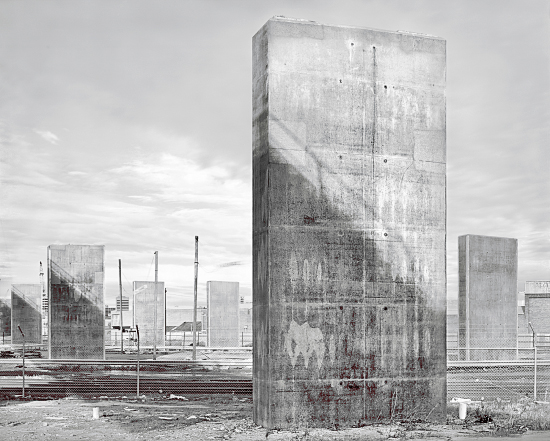 Les Walkling, The site of his last embrace 1986, silver gelatin print, 953mm x 762mm
Les Walkling, The site of his last embrace 1986, silver gelatin print, 953mm x 762mm
Speaking with a dear friend the other day regarding our pictures, I recalled how often I have described the ‘two sides of the lens’, and the transparency and democracy with which the lens draws the world for us. And how ‘which side of the lens’ we spend the most time on, tends to define us as a photographer. Those friends obsessed with photographing things in front of the lens tend to be witness or documentary photographers, where as those friends who spend most of their time on ‘their’ side of the lens, tend to work in the world of contemporary art. So when someone asks me what I take photographs of, I simply say ‘I photograph things that can’t be seen’; which for me are my thoughts, feelings and emotions.
In this way photography is foremost an intellectual engagement, and a repository rich in ‘subjects that matter’ to us. But our pictures are also filled with insights and truths about ourselves that we barely know or can name. They make claims on our behalf, while also revealing what lies within. They manifest our thoughts as much as they bring into focus our demons and dreams.
I have also often characterised photographs as either portraits (of things) or maps (of territories). Both are representations or translations, but they differ according to our investment in them. Just as understanding itself is made up of both what is conscious to us, and what is unknown, feared or misunderstood. Our pictures, like ourselves, are equally aware and filled with wondering. The instantaneous privilege of a photograph channels both what is seen and what is unseen; who we are and what we are becoming.
The problem though of making pictures that matter beyond our self interest, never goes away. So much of my youthful exploration of this problem was consumed by ‘conversations with dead people’; that is, conversations with great artists who died long before I was born. Artists who may have never written down what and how they did what they did, but nevertheless explained themselves, their principles and methods so perfectly in their works.
Great pictures touch us and engage us in the most compelling and mysterious ways, and it is these mysteries that have kept me artistically alive all these years. This is also the greatest gift of friendship; what it elicits from us. For a good life is all about the company we keep; in our relationships, both in person, but also through deeds, words, writings, music, and pictures. I still talk to dead people on a daily basis, and count them amongst my closest allies. But whether our work amounts to anything worth anyone else knowing, that is indeed an enduring mystery.


{ 3 comments… read them below or add one }
This is a beautiful essay Les, thank you for writing and sharing it.
All the best,
Jessie
Dear Les, I read this articlet just before attending Orpheus but only now, that I had the opportunity to here your teaching that it made perfect sense. As you say, it’s the company we keep.
Thank you for introducing the ‘dead people’ in such a special way.
Leo.
Enjoyed your article Les, Thank you